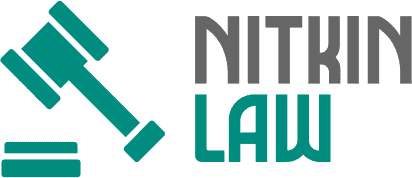
Salmonella poisoning is a significant and commonly reported foodborne illness in the United States. Each year, thousands experience symptoms ranging from mild discomfort to severe, life-threatening conditions. While most people associate Salmonella with undercooked food, the sources extend beyond kitchens and restaurants. Those affected may face physical, financial, and legal consequences.
Legal Grounds for Salmonella Infection Claims
Legal claims related to Salmonella typically arise when negligence in food handling, production, or distribution leads to contamination. These cases often fall under product liability, personal injury, or negligence law.
Filing Salmonella infection claims usually depends on demonstrating that a party failed to meet food safety standards. For instance, a restaurant that served raw eggs in a dessert without proper warning, or a manufacturer that sold unpasteurized milk without adequate testing, may be held responsible if their product caused illness.
Establishing liability requires a direct link between the contaminated item and the infection. This often includes documentation such as receipts, leftover samples, and medical records.
Common Causes and Points of Contamination
Salmonella bacteria thrive in several environments. The most well-known source is improperly cooked or handled food, particularly poultry, eggs, and dairy. However, raw foods like leafy greens and tomatoes may also be involved if they’ve come into contact with contaminated water or equipment. Cutting boards used for raw meat without being cleaned between uses can easily transfer bacteria. Household pets, particularly reptiles and other animals that consume pet food, are less obvious sources but pose similar risks.
Public spaces such as petting zoos or homes with backyard poultry can also facilitate transmission, especially if proper hand washing isn’t practiced. Salmonella can also spread through cross-contamination during food prep, particularly in environments with inadequate hygiene controls.
Symptoms, Diagnosis, and Medical Documentation
The effects of Salmonella poisoning can vary widely. Common symptoms include stomach cramps, abdominal pain, fever, and diarrhea. In some cases, the illness escalates to more serious outcomes like typhoid fever or reactive arthritis. In vulnerable populations, such as the elderly and immunocompromised individuals, symptoms may persist longer or become life-threatening.
Diagnosing the illness generally involves a stool sample, combined with a physical exam and symptom history. Medical records serve as key evidence if a claim is filed. A qualified health care provider may prescribe antibiotics in complicated cases, although most recover with supportive care, such as oral rehydration solutions and IV fluids.
How Outbreaks Are Traced and Investigated
Tracing an outbreak back to its source often involves public health investigations. The Centers for Disease Control and Prevention (CDC) and other agencies monitor patterns in foodborne illness reports. When clusters are identified, investigators look for common links, such as brands, food items, or locations. If evidence confirms a specific source, authorities may issue food recalls or public alerts.
Legally, these findings can provide crucial support. A documented recall involving a product that matches what an individual consumed can significantly strengthen their case. Legal representatives may also consult experts in food safety or microbiology to establish causation and timelines.
Legal Process and Challenges in Proving Fault
The legal process usually starts with an initial consultation to evaluate the case. If there’s a basis to proceed, an attorney may gather evidence, interview witnesses, and request records from food establishments or suppliers. Claims can target restaurants, caterers, food processors, or distributors depending on where the breakdown occurred.
However, these cases aren’t always straightforward. Bacteria like Salmonella are common in the intestinal tract of animals and can spread in multiple ways. Defense teams may argue that the source is inconclusive, especially if the individual consumed several high-risk items. Therefore, establishing a direct connection between the illness and a specific product or location remains a central challenge.
Prevention and Legal Accountability
Salmonella exposure often begins far earlier than the point of consumption. Contamination can occur during farming, processing, or distribution. When handlers overlook basic practices like sanitizing surfaces or avoiding untreated water, they increase the chance of contamination reaching consumers. These failures move beyond hygiene concerns and into legal territory, especially when foodborne illness results.
From a legal perspective, responsibility follows control. A facility that mishandles raw meat or a supplier that stores products near animal feces may be liable if their actions contribute to an outbreak. While individuals are urged to follow food safety guidelines at home, systemic accountability remains with those overseeing production and distribution. If avoidable conditions lead to illness, legal consequences often follow.
Salmonella poisoning is a significant and commonly reported foodborne illness in the United States. Each year, thousands experience symptoms ranging from mild discomfort to severe, life-threatening conditions. While most people associate Salmonella with undercooked food, the sources extend beyond kitchens and restaurants. Those affected may face physical, financial, and legal consequences.
Legal Grounds for Salmonella Infection Claims
Legal claims related to Salmonella typically arise when negligence in food handling, production, or distribution leads to contamination. These cases often fall under product liability, personal injury, or negligence law.
Filing Salmonella infection claims usually depends on demonstrating that a party failed to meet food safety standards. For instance, a restaurant that served raw eggs in a dessert without proper warning, or a manufacturer that sold unpasteurized milk without adequate testing, may be held responsible if their product caused illness.
Establishing liability requires a direct link between the contaminated item and the infection. This often includes documentation such as receipts, leftover samples, and medical records.
Common Causes and Points of Contamination
Salmonella bacteria thrive in several environments. The most well-known source is improperly cooked or handled food, particularly poultry, eggs, and dairy. However, raw foods like leafy greens and tomatoes may also be involved if they’ve come into contact with contaminated water or equipment. Cutting boards used for raw meat without being cleaned between uses can easily transfer bacteria. Household pets, particularly reptiles and other animals that consume pet food, are less obvious sources but pose similar risks.
Public spaces such as petting zoos or homes with backyard poultry can also facilitate transmission, especially if proper hand washing isn’t practiced. Salmonella can also spread through cross-contamination during food prep, particularly in environments with inadequate hygiene controls.
Symptoms, Diagnosis, and Medical Documentation
The effects of Salmonella poisoning can vary widely. Common symptoms include stomach cramps, abdominal pain, fever, and diarrhea. In some cases, the illness escalates to more serious outcomes like typhoid fever or reactive arthritis. In vulnerable populations, such as the elderly and immunocompromised individuals, symptoms may persist longer or become life-threatening.
Diagnosing the illness generally involves a stool sample, combined with a physical exam and symptom history. Medical records serve as key evidence if a claim is filed. A qualified health care provider may prescribe antibiotics in complicated cases, although most recover with supportive care, such as oral rehydration solutions and IV fluids.
How Outbreaks Are Traced and Investigated
Tracing an outbreak back to its source often involves public health investigations. The Centers for Disease Control and Prevention (CDC) and other agencies monitor patterns in foodborne illness reports. When clusters are identified, investigators look for common links, such as brands, food items, or locations. If evidence confirms a specific source, authorities may issue food recalls or public alerts.
Legally, these findings can provide crucial support. A documented recall involving a product that matches what an individual consumed can significantly strengthen their case. Legal representatives may also consult experts in food safety or microbiology to establish causation and timelines.
Legal Process and Challenges in Proving Fault
The legal process usually starts with an initial consultation to evaluate the case. If there’s a basis to proceed, an attorney may gather evidence, interview witnesses, and request records from food establishments or suppliers. Claims can target restaurants, caterers, food processors, or distributors depending on where the breakdown occurred.
However, these cases aren’t always straightforward. Bacteria like Salmonella are common in the intestinal tract of animals and can spread in multiple ways. Defense teams may argue that the source is inconclusive, especially if the individual consumed several high-risk items. Therefore, establishing a direct connection between the illness and a specific product or location remains a central challenge.
Prevention and Legal Accountability
Salmonella exposure often begins far earlier than the point of consumption. Contamination can occur during farming, processing, or distribution. When handlers overlook basic practices like sanitizing surfaces or avoiding untreated water, they increase the chance of contamination reaching consumers. These failures move beyond hygiene concerns and into legal territory, especially when foodborne illness results.
From a legal perspective, responsibility follows control. A facility that mishandles raw meat or a supplier that stores products near animal feces may be liable if their actions contribute to an outbreak. While individuals are urged to follow food safety guidelines at home, systemic accountability remains with those overseeing production and distribution. If avoidable conditions lead to illness, legal consequences often follow.

When to Consider Legal Action
Legal action becomes more relevant when Salmonella poisoning results in serious health effects or financial loss. Medical complications, prolonged recovery, or missed work can justify exploring compensation. In these cases, the focus often shifts to how the contamination occurred and who had control over the food at each stage. If the illness traces back to a manufactured or distributed product, the legal theory of product liability may apply, particularly when contamination stems from a failure in testing, labeling, or safe handling.
Acting quickly makes a difference. The longer someone waits, the harder it becomes to gather physical evidence or identify others who were affected by the same source. Even a single purchase receipt or leftover food sample can help build a link between the product and the illness. Speaking with a legal professional early can clarify if the facts support a claim and what documentation is necessary to move forward.
Key Takeaways for Affected Individuals
Salmonella poisoning often begins with exposure to bacteria in food, water, or animals, but its effects can be far-reaching. Beyond physical recovery, affected individuals may face medical bills, lost wages, or long-term complications. Recognizing when a situation moves beyond a simple case of foodborne illness into something with legal dimensions helps clarify options. Understanding how infections occur, how they are investigated, and how the legal system approaches liability creates a clearer path for those seeking accountability.

